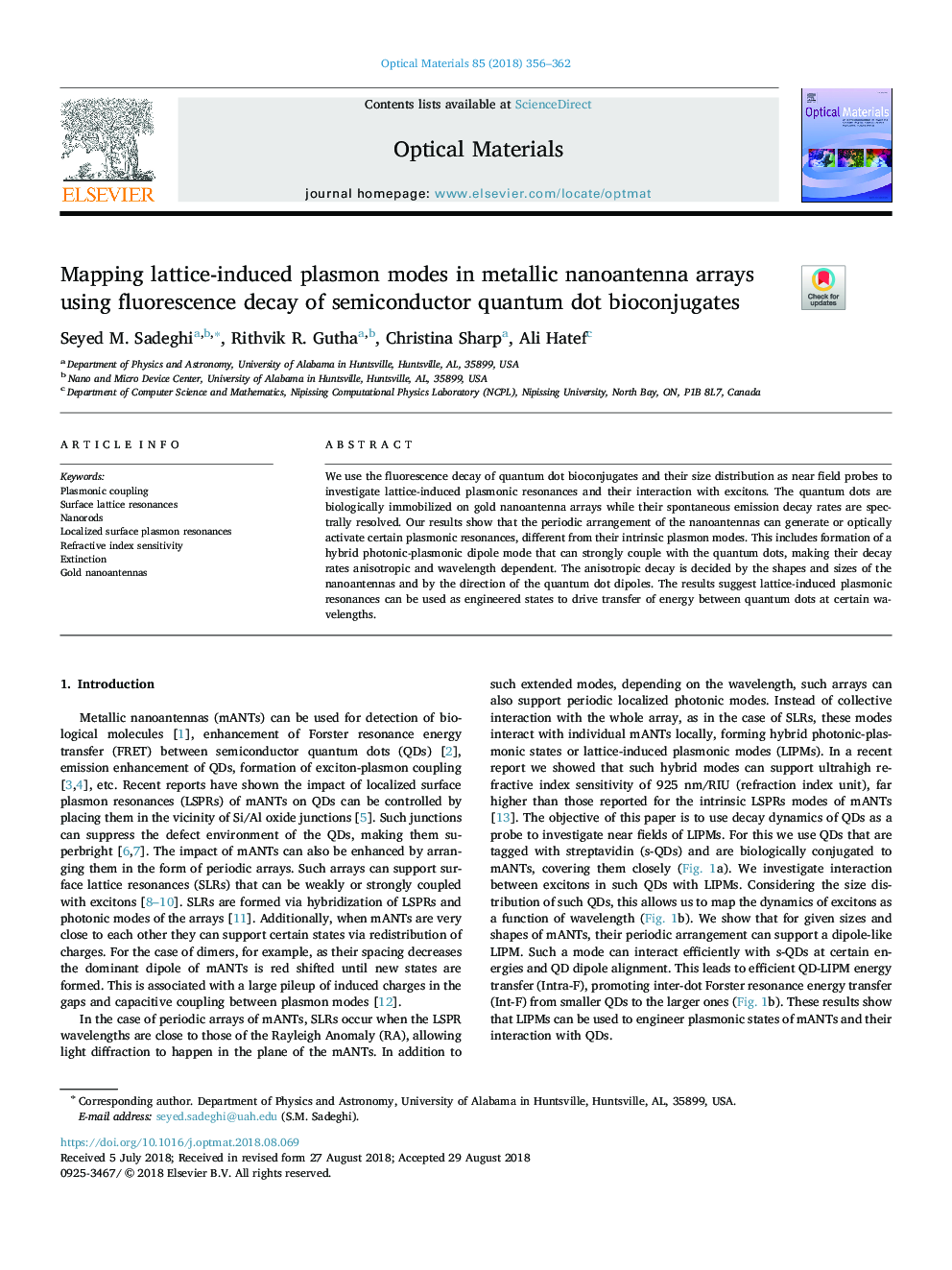| Article ID | Journal | Published Year | Pages | File Type |
|---|---|---|---|---|
| 10128436 | Optical Materials | 2018 | 7 Pages |
Abstract
We use the fluorescence decay of quantum dot bioconjugates and their size distribution as near field probes to investigate lattice-induced plasmonic resonances and their interaction with excitons. The quantum dots are biologically immobilized on gold nanoantenna arrays while their spontaneous emission decay rates are spectrally resolved. Our results show that the periodic arrangement of the nanoantennas can generate or optically activate certain plasmonic resonances, different from their intrinsic plasmon modes. This includes formation of a hybrid photonic-plasmonic dipole mode that can strongly couple with the quantum dots, making their decay rates anisotropic and wavelength dependent. The anisotropic decay is decided by the shapes and sizes of the nanoantennas and by the direction of the quantum dot dipoles. The results suggest lattice-induced plasmonic resonances can be used as engineered states to drive transfer of energy between quantum dots at certain wavelengths.
Related Topics
Physical Sciences and Engineering
Materials Science
Ceramics and Composites
Authors
Seyed M. Sadeghi, Rithvik R. Gutha, Christina Sharp, Ali Hatef,
